Frustrated with my neighbors’ noisy dog barking all hours of the day and night, I needed a way to get some peace and quiet at home. But I also didn’t want to spend a fortune on soundproofing. I’d heard that cork was a good soundproofing material, but I had never used it before, so I went searching for information.
Is cork good for soundproofing? It turns out cork is an excellent natural soundproofing material. It is one of the few sustainable and recyclable soundproofing materials that won’t break your bank account. Cork is such an efficient sound dampener that it is often used in recording studios and theaters.
That all sounded too good to be true, but I admit, I was intrigued. I dug deeper and found a lot more information on cork as soundproofing material, and I was more excited than before. Let me share what I found.
What Is Cork?
During my research, I was surprised to learn that cork is more than 50% air. Of course, I already knew that you could use air as insulation to prevent heat loss, but I hadn’t realized air was a good sound dampener, too.
Cork is a buoyant, impermeable, cellular material. It is made up of a honeycomb design of air-sealed cells made of the bark of the cork oak. The cells each absorb the vibrations of sound, preventing those sounds from passing through to the other side.
 Because cork oak trees are not cut down in order to make cork, the cork industry is considered sustainable and environmentally friendly. That made me feel much better about considering cork for my soundproofing needs.
Because cork oak trees are not cut down in order to make cork, the cork industry is considered sustainable and environmentally friendly. That made me feel much better about considering cork for my soundproofing needs.
A nice bonus to cork as a soundproofing material is that it’s also a natural fire retardant. Hey, if I can kill two birds with one stone, I’m going to do it. You have to love the efficiency of a two-in-one product.
Cork comes in panels, underlayment, planks, and tiles to meet your soundproofing needs. It can be used in walls and floors. And since it’s lightweight, it’s super easy to install.
But I’m getting ahead of myself. I’ll cover more on all that later.
Does Cork Reduce Noise?
Yes, cork is an excellent noise-reducer. It doesn’t take much to get effective soundproofing out of cork. From what I found, 3/32” (just three millimeters) of cork can block up to 10 decibels of sound.
It’s time for a quick science lesson. Sound moves in waves. In order for us to hear those sounds, all of the waves need to remain intact. When sound waves are disrupted, sounds are muffled or completely eliminated.
Cork works by breaking down sound waves within the cell walls and diffusing them.
Cork is great for walls as it absorbs about 40% of the sound in the frequency range produced by the human voice. Used on walls or floors cork will deaden vibration and sound transfer by absorbing the noise, not reflecting it like a hard solid surface. Cork will effectively stop echo noise too.
Cork Acoustic Properties
Cork comes from the bark of the evergreen cork oak. 80% of the world’s cork comes from the western Mediterranean area. Once a tree reaches 10” in diameter, it is harvested. Every 9 – 14 years after that, it will be harvested again, making it a sustainable product.
Cork is a great insulator. It ranks second only to felted wool as a thermal insulator, the stuff Mongolian Yurts are made of, and second to solid rubber as an acoustic insulator. It is the cell structure of the cork that gives it its acoustic properties.
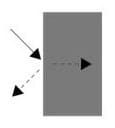 Sound Absorption
Sound Absorption
The honeycomb-like cell structure of cork and the airspaces trapped in the structure make it an effective soundproofing material. A cubic centimeter, approximately 3/8” cubed, contains about 40 million cells. When sound tries to pass through it, it is trapped and absorbed. A thin layer (3/32”) will absorb 10dB of sound.- Noise Reduction
Cork reduces sound and noise vibration by trapping it in its cell structure. It reduces the sound transmission of sound through walls and absorbs the impact of feet through the floor to the ceiling below. - Acoustic Insulation
Cork is used in homes, offices and other buildings to effectively reduce acoustic transmission through walls, floors, and even ceilings. It absorbs the mid to upper frequency ranges and prevents noise transmission and echo.
Advantages of Using Cork
There are many advantages to using cork for soundproofing. It is available in rolls or sheets of different thickness, decorative wall panels, underlay, and ceiling tiles.
It is sustainably renewable, recyclable and lightweight way to insulate against noise. In addition, it is a durable, inexpensive, healthy, and safe way to reduce noise transmission in your home or business.
- Less Expensive
The cost of cork depends on its thickness, size, and the use it is intended for. Cork underlay is less expensive than decorative wall panels or floor boards. Underlay is about 70 cents a square foot and decorative panels $8.50 or higher a square foot. Other comparable products are usually more expensive. - Health Benefits
Cork is anti-microbial and water resistant, so helps to reduce the growth of mold or mildew. It is antistatic so most dusts and other toxins won’t adhere to it. Cork also has limited off-gassing, so it is good for people who suffer from allergies. It also has a low conductivity so reduces electrical risks. - Durability and Aesthetic Quality
Cork is available in a variety of colors, textures, and profiles making it an attractive addition to any decor. Aside from reducing noise transfer, it wears well as flooring and resists indenting by furniture. A highly durable product it has many household uses, including hot pads, bath mats, flooring, wall decoration, table coverings, and even furniture. - Cushioning
Cork makes a warm cushiony floor that is easy to clean and care for. The cork has a soft surface that cushions foot falls and impact, making it good for households with children or seniors. The cushioning also reduces the sound transfer and echo of people walking or running. - Fire Resistant
Cork is fire resistant, not fire retardant. It takes a very high temperature for it to burn or melt and is slow to combust. If it does catch fire, it creates less smoke or chemicals off-gassing than rubber, vinyl or other laminate soundproofing materials. - Environmentally Friendly
Cork is a sustainably renewable material which is environmentally friendly. It is harvested from trees every 9 to 14 years, and there is very little waste in its manufacture. Carbon trapped in cork doesn’t return to the atmosphere until it is burned or decomposes in landfills; making it even more environmentally friendly.
Cork Noise Reduction Coefficient
The Noise Reduction Coefficient (NRC) measures the average amount of sound an acoustic material may absorb. The scale range is 0 to 1; with 0 meaning no sound was absorbed and 1 that all sound was absorbed. Density and thickness of a material are also factors used when calculating the NRC.
The NRC is usually reported as a percentage. 1-inch thick cork wall tiles have a rating of 0.7, which means 70% of the noise is absorbed and 30% is reflected.
The Sound Transmission Class (STC) is used in the US to rate ceilings, doors, interior and exterior walls, and windows for sound reduction. The ISO (International Organization for Standardization) is similar to the STC, but used outside the US.
Types of Cork Interior Building Materials
Cork has a variety of uses as an interior building material to help reduce sound transfer. Some products are decorative yet functional; others disappear underneath or behind other materials. Cork can also improve the aesthetics and health of your home too.
- Soundproofing underlayment under rigid flooring
Cork is an inexpensive soundproofing underlay. It reduces sound transfer and echo, and is water-resistant. Cork will last for years and doesn’t deteriorate or off-gas noxious fumes like other underlays. - Flooring
Cork flooring is available in planks, tiles, floating tiles, and rolled sheets. It cushions the floor reducing sound transfer and echo. Combined with cork underlay it will further improve soundproofing. It reduces floor noises plus conversation, TV and other airborne noises. - Wall Tiles
Wall tiles and panels are available in different colors, thicknesses, textures and decorative styles. They provide acoustic and thermal insulation as well as aesthetically improving the look of a plain drywall interior. - Ceiling Tiles
Using cork panels or tiles will further soundproof a room. The tiles or panels can be glued to drywall or other rigid material, and then attached to the ceiling or into a drop ceiling grid. It will absorb sound waves and reduce echoes.
Cork Soundproofing Underlayment
Soundwaves radiate from an origin through vibrations which are picked up by the ear as sound. Cork will reduce vibration and decrease noise transfer better than any other material except rubber.
Half-inch thick sheets or panels of cork are used as an underlay to reduce the transfer and echo of noise. The cork goes under other hardwood, laminate, ceramic, porcelain, marble, stone, or cork flooring. It lessens the movement of sound through the floor and within the room itself.
The underlay is secured to the concrete or wood subfloor using a cork underlay adhesive. It not only reduces noise but provides a thermal barrier and helps to prevent cracking from the subfloor transferring through to the finished floor. Use a good cork adhesive and heavy (75 pounds) roller when installing the cork.
 A good example of a sound control underlayment is QEP 72003Q 1/4-Inch, 4×25-Foot Cork Underlayment. 100 square feet of coverage to help improve noise reduction and floor heating. With an STC rating of 52 for a 6” concrete floor or an STC of 60 for a 6” concrete floor with a suspended ceiling, it is a great way to reduce sound transfer and echo, plus meet or exceed the building code.
A good example of a sound control underlayment is QEP 72003Q 1/4-Inch, 4×25-Foot Cork Underlayment. 100 square feet of coverage to help improve noise reduction and floor heating. With an STC rating of 52 for a 6” concrete floor or an STC of 60 for a 6” concrete floor with a suspended ceiling, it is a great way to reduce sound transfer and echo, plus meet or exceed the building code.
Another good option is Eco Cork Foam Underlayment. It offers 75 square feet of thermal and soundproofing coverage. With a built-in 6 mil vapor barrier, it’s even more resistant to moisture, mold, and mildew.
The cork is 1/8” thick with the vapor barrier so is ideal for radiant heat flooring. With an STC of 66, it will improve noise and thermal reduction.
You may also want to consider QEP 72001Q Natural Cork Underlayment 1/2 inch Sheet. It is available in 25 unit packages of 2’x3’ sheets that cover 150 square feet. With an STC rating of 89, it provides a significant improvement over the minimum rating of 50.
The cork will reduce sound transfer between floor and ceiling, and room to room. It improves in-floor heating effectiveness and room to room sound dampening.
For more information on flooring underlayment, please see our article Best Soundproof Underlayment.
Cork Acoustic Flooring
Cork flooring is a very durable material and has been used for more than 150 years. Many public buildings designed by Frank Lloyd Wright more than 75 years ago, still have their original cork floors. Today it is often used in kitchens and hallways to lessen sound transfer, and cushion feet.
Cork is a sustainable, eco-friendly product. It is water, mold, mildew, and dust resistant which makes a more healthy and natural soundproofing choice. Available in a variety of colors and thicknesses in a roll, plank, tile or floating tile formats, cork is a great choice. It deadens noise transmission and echo helping to sound proof your home or business.
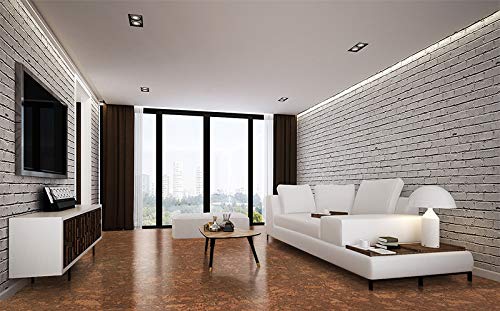 The surface nonslip is soft and slightly springy, so feels better on tired feet and legs, or if you fall on it. With proper care it will last for years! An added bonus is it’s also fire resistant.
The surface nonslip is soft and slightly springy, so feels better on tired feet and legs, or if you fall on it. With proper care it will last for years! An added bonus is it’s also fire resistant.
A good example is the Tasmanian Burl Cork Flooring panels. They are 5/16” thick by 12” by 24”, and packaged to cover 16sqft.
A durable, high-density floor tile that feels soft on the feet. It is easy to cut and fit, light to work with, and is glued to the floor. Resistant to water and fire, it also reduces noise transfer between floors and echo within the room.
 Another option is a floating cork floor. There’s a gray leather cork Forna plank product made in Portugal. The planks are ½” thick by 11-7/8”x35-7/16” and interlock to form a seamless floor.
Another option is a floating cork floor. There’s a gray leather cork Forna plank product made in Portugal. The planks are ½” thick by 11-7/8”x35-7/16” and interlock to form a seamless floor.
With a built-in cork underlay and a finished top cork layer, it reduces impact and noise transfer within a room and between floors. A package will cover about 17-1/2 feet, it’s easy to cut and install, and doesn’t require any glue. It is a non-slip floor and will reduce noise by 23dB.
Acoustic Cork Wall Tiles
Cork wall tiles or panels reduce the movement of sound between rooms and absorb sound within a room to reduce any echo. They also add thermal insulation to a room. Available in a variety of profiles, colors, and thicknesses, they add an aesthetic quality and warmth to any room.
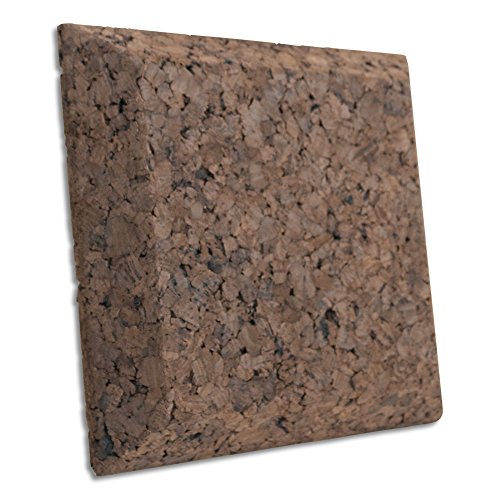 The natural material is environmentally friendly and helps improve the air quality for allergy sufferers. Its natural color is dark browns to black but can be lightened with water-based inks or stains. It’s easy to install in any room and will improve sound quality and warmth.
The natural material is environmentally friendly and helps improve the air quality for allergy sufferers. Its natural color is dark browns to black but can be lightened with water-based inks or stains. It’s easy to install in any room and will improve sound quality and warmth.
An excellent wall tile product that provides professional level noise reduction is JOCAVI ECOiso Sound Absorbing & Soundproofing Tiles. Available in natural dark brown cork, the tiles are 1.6” thick and 9.8” square; an 18 pack covers 12sqft.
The thicker, high-density cork reduces echo and noise transfer between rooms. The fire retardant tiles also help improve air quality for those who suffer from allergies.
 You may want to try a larger 12”x36” tile instead of the smaller tile. Forna Cork Wall Tiles are 1/4” thick, and a package covers 66 square feet. With squared edges, it forms a seamless wall that reduces noise transfer, echo, and thermal loss.
You may want to try a larger 12”x36” tile instead of the smaller tile. Forna Cork Wall Tiles are 1/4” thick, and a package covers 66 square feet. With squared edges, it forms a seamless wall that reduces noise transfer, echo, and thermal loss.
Cork absorbs vibration, resists fire, molds, mildew, and insects, and repels dust. The tiles are a great choice for deadening noise and improving the look of a room.
Cork Soundproofing Ceiling Tiles
A cork ceiling will decrease the sound transmission from one floor level to another, and help make the room warmer. It also reduces the echo within a room. There is a wide selection of aesthetically pleasing tiles that can be permanently attached to a drywall ceiling, fitted into a drop ceiling grid, or screwed to open floor joists or an exposed concrete ceiling.
Select a product that is designed for the intended use, or it may not stay on the ceiling; the higher the density, the better. Cork panels that are 13/16” thick will reduce sound transmission by more than 30dB, 1-9/16” more than 40dB, and 2-7/16” by about 50dB. A great way to reduce sound transmission from the TV room, rumpus room, or noisy neighbors!
 JOCAVI ECOiso Sound Absorbing & Soundproofing Cork Acoustic Panels are a great choice. Made of natural eco-friendly cork, the panels are 19.7”x39.4” and 2.4-inches thick. The extra thick high-density cork suppresses approximately 50dB of sound, making it an excellent noise barrier between floors, and within a room. Available in a 6-pack that covers 32sqft, the square edged tiles can form a seamless soundproofing barrier between you and the tenants above or the kid’s playroom.
JOCAVI ECOiso Sound Absorbing & Soundproofing Cork Acoustic Panels are a great choice. Made of natural eco-friendly cork, the panels are 19.7”x39.4” and 2.4-inches thick. The extra thick high-density cork suppresses approximately 50dB of sound, making it an excellent noise barrier between floors, and within a room. Available in a 6-pack that covers 32sqft, the square edged tiles can form a seamless soundproofing barrier between you and the tenants above or the kid’s playroom.
Related Questions:
Is cork fire resistant? Cork is a very dense material with a high combustion temperature, about 390°F, making it a natural fire retardant. It is slow to spread flames and doesn’t release toxins during combustion. Its low conductivity to heat, vibration and sound also explain why it is used to make engine gaskets.
Related posts:

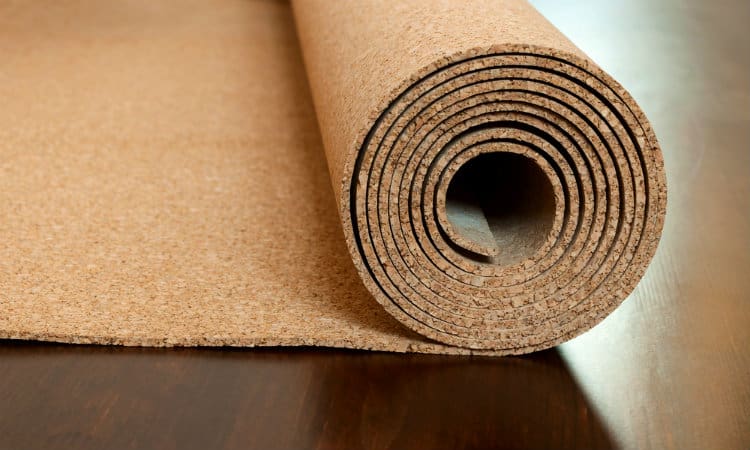
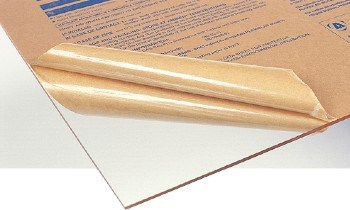
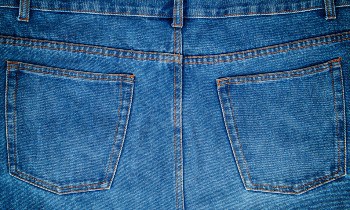
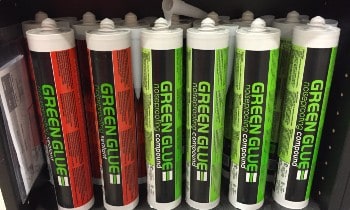

Can the cork tiles be painted?
Yes, you can, but cork is very porous, so you need to seal it before painting. To seal you can use Zinsser B-I-N Shellac-Base Primer
Will it lower the STC rating ?
Hey
Do you think that 10cm thick cork panels, glued to a ceiling will give a noise reduction from a neighbor upon me?
Thanks
I have a anti social and attention seeking neighbour. They make soooo much noise, and I was to reduce it or completely cut it off if I can. I will eventually do this throughout he house as I live in a terraced property.
I saw a roll of cork which is 10mm thick, but to reduce noise completely how much thickness would you think it would take ?
Kind regards
M m
Could you use cork over a window opening to stop noise from entering from outside.
I am considering using cork as a sound insulator between my house and next door. I would install the cork on my side of a 6 x 51 foot fence and then add another layer of cedar, again on my side, effectively sandwiching the cork.
Is this something you would recommend? The cork will get wet I am certain although their is a top cap to the fence, water will get in.
In am concerned about the effectiveness of the cork to reduce the noise (I realize the top of the fence is open) and if the cork will rot or smell in time.
Thanks
Would Cork if covered with a fabric still have good soundproofing/Acoustic properties?
My new a/c unit, in the hall closet, is considerably more noisy than the previous a/c. I’d like to put some sound-proofing in the closet on walls and door. Would cork tiles be appropriate for this? I have the a/c guy coming tomorrow for annual servicing and will talk to him about it but he will probably shrug and say sure, why not? Any advice is appreciated. Thanks!
Please check out my articles on how to soundproof doors – https://bettersoundproofing.com/how-to-soundproof-a-door/ and walls – https://bettersoundproofing.com/soundproofing-walls/
Such a great article! Many thanks for sharing the info. I have a terrible car noise coming from the road my new home is on. I designed a large corner headboard to save me from the car noises, however once I slept in my little what I thought would be quiet and soundproof corner, I was disappointed because the road noises have sneaked through, either through the wall below the headboard(height of the bed) or through the double glazed windows on both sides of the bed. I am so upset, hence considering buying 4mm thick cork tiles to stick to the wall behind the bed. Do you think it would help to break the sound? Thank you!
Hello. I am getting ready to start a home recording studio in my 12′ x 17′ garage under the house. I planned on lining the walls and ceiling with 1″ cork, will this be enough to stop vibration or, could i use 4″ wide strips of re bonded rubber to decouple the wall with a 1/2″ air gap? Oooops! Forgot to tell you the walls and ceiling have 5/8″ drywall on them
Hi,
I have a question : in your experience, would cork applied on my ceiling reduce the noise created by my neighbor walking and talking on or above the concrete floor above my apartment? In other words, does it work both ways in preventing sounds being transferred from one floor to the other ?
I have noisy neighbors upstairs
I m cosidering to glue 4 inch thick cork plates on my ceiling
Will it reduce the sound?
Thanks
I am studying the use of cork panels and felts for controlling sound absorption and dampening a home music/theater room. Do you have references to data of absorption coefficients versus frequency? Thanks.
Hi Eugene,
Thanks for your great blog. I am bouncing on Chantelle’s comment.
I wanna surround my bloody kitchen fridge with 1 sq. foot cork panels fixed on the walls, and also on one side of the fridge in order to reduce the sound it makes,.
If I paint the cork panels with latex paint will it reduce their soundproofing qualities. My guess is that is should a bit because their surface will now be coated with a thin latex layer.
Thanks in advance for your kind reply,
where can i buy this
Maybe some paintings will reduce the cork NRC?
Could the termites attack cork? How to prevent?
Hello, I would like to put cork behind sheet rock to block the noise coming from the next room. I am wondering if underlayment can be used in this manner. My thought is to put it on the wall and glue it to the studs and then put sheet rock over and screw through the sheet rock through the cork to the studs. But I can’t find anybody that can tell me if this will be effective and if it will work. Thank you
Hi Jessica, The cork is a very effective soundproofing product–not just for floors but also walls and ceilings. Just wondering if the drywall is still there. It would be way easier to glue the cork to existing drywall, then add another layer of drywall over the cork. (Sorry, I am in Alberta, Canada. Sheet rock/drywall–same thing.) That way you could get more mass on the wall to add to the soundproofing value of the cork. The cork would also lay flatter against the drywall. You could even consider using Green Glue over the cork.
Another option you could consider is QuietWalk Plus. It is also floor underlayment–felt/vapor barrier combination. About the same STC rating as cork. Less expensive. The thing that would worry me about cork over studs is how brittle it is and how difficult it might be to get flat. The QuietWalk is an easier install specially with adhesive along one edge to seal the overlaps. It is difficult to tear so you can attach one end and pull it tight as you go across the wall. Both products are available from Amazon. Hope that helps.
Hi Eugene,
Im converting a van into camper and looking at soundproofing and helping to insulate.
I’m thinking cork would be a good options.
Cheers for the idea
Hi Eugene,
I have an office room right next to me bedroom and i keep the fiancee awake at night simply with my voice. The wall is a plasterboard hollow construction. Would 15mm thick cord panels deaden my voice transferring to the next room?
Hi Rhun,
Cork will work very well to absorb, reflect, and deaden your voice. You will have to get it in rolls, and either glue it, or pin it to the walls. You might give some thought to soundproof blankets (also known as packing blankets). Price to cover a wall will be about the same but they are easier and quicker to put up. Specially if you are renting. May not make the landlord happy if you glue cork to the wall.
Hope that gives you a couple of options,
Terry
Hello,
I’m looking to have the carpet replaced in my condo with engineered hardwood.
My HOA requires that the replacement have and IIC rating of 60+. If the engineered hardwood we selected has rating of 50 IIC and we add an 6mm thick cork underlay that also has a IIC 50 rating, does that mean we meet the requirement? Does IIC rating stack? 50+50 = 100 IIC?
Hi Kevin,
Unfortunately, you cannot add IIC ratings. Most IIC ratings are for the complete system, not just the individual product. There are different ratings for different floor systems–concrete, wood framed,(including the type of insulation and construction). I think that 6mm cork will get you to 60+. You might also want to give some consideration to QuietWalk Plus which will get you to an IIC rating of 71 depending on what type of subfloor you are going over. Take a look at mpglobal.com for their testing.
Hope that helps,
Terry
Hi Terry,
I have a similar question regarding IIC rating. We would like to install engendered wood flooring 5/8 thickness and use 12 mm cork underlay. We are planing to glue it. Construction of the floor is as follow: wood frame joists on every 18 inches (I believe) over that is a 1/2 inch plywood and 1 1/2 inch cement subfloor. Between joists is fiberglass isolation. We are on the second floor and want to make sure that neighbors below us don’t hear our footsteps, etc. bylaws are very vague but requires carpeting in all areas that are above neighbors below ceilings. We are planning to also place carpeting (large area rugs) in the living, dining and bedroom floors. Will all this help increase the IIC and STC rating?
Hi Vicky,
I think you are going above and beyond. Your neighbors should be pleased. For an IIC rating calculator please go to Commercial Acoustics.
Terry
Hey Eugene
Do you think that 10cm thick cork panels, glued to a ceiling will give a noise reduction from a neighbor upon me?
Thanks
Hey
If I glue 10cm thick cork panels on my living room ceiling, does it have any noise reduction effect from my neighbor upon me?
Thanks
Hi David,
Probably not as much as you are hoping for. Cork works very well at dissipating sound created inside the room. You are probably better off using sound isolation clips, hat channel, and something like 5/8″ CertainTeed soundproof drywall. This will decouple your ceiling from his floor. A lot more expensive and time consuming, but more effective. Or, depending on room size above, for a couple hundred dollars maybe you can split the cost of a thick wool rug and soundproof underlayment like RugpadUSA with the neighbor. That will absorb the sound inside his place before it gets to yours.
Hope that helps and you get your problem solved.
Terry
Hi terry ! Wow your advice is great! We just bought a condo and the footfalls from the townhouse above penetrate to my bedroom and even below to my living room. In the bedroom the vibration is awful. What do you think could work best to fix this ? Also if I treat the ceiling Will the vibrations redirect to the walls and travel down still? Thx !!!
Hi Samantha,
Your most effective, easiest, and ultimately cheapest soundproofing is done at the source of the noise. If you can talk to your neighbor, ask them to remove their shoes, or put down some rug, life might get better. You might have to offer to pay part, or all of the cost of rug. If they opt for rug, make sure they are putting down 1/2″ RugPadUSA underlayment under the carpet.
If you have to work on your ceiling, your best options include:
1) If your ceiling is not textured, you can add a layer of 5/8″ drywall with Green Glue sandwiched between layers.
2) If your ceiling is textured, Green Glue will not work because you need smooth hard surfaces. If the texture is relatively smooth you can screw 5/8″ drywall over it. Then if you want add another 5/8″ layer of drywall with Green Glue sandwiched between.
3) You can use 5/8″ QuietRock drywall instead of standard drywall. It has a layer of viscoelastic polymer between 2 layers of thinner drywall replacing the Green Glue.
You might want to check out our articles How to Get Revenge on Noisy Neighbors and Dealing with Upstairs Neighbors Stomping.
Terry
Thank you very much!
Hi Eugene,
We are thinking of gluing a sheet of 1/2 cork to our office door, in order to get more privacy. We currently have a hollow slab door and every conversation is broadcast throughout the house. How much do you think this will help, in combination with weatherstripping and a door sweep? Thanks for any help.
Kara
Hi Kara,
1/2″ cork combined with weatherstrip and sweep will work well. (And, as a bonus, you can use push pins to hang things on the cork.) You might also want to check out our article How to Soundproof a Bathroom Door for a few more options. I am not a fan of rubber sweeps. Take a look at the cloth ones with foam filler.
Hope that is helpful,
Terry
Hi!
Do you think cork panels of 20-30mm are sound absorvent enough to be an alternative to the more traditional acoustic panels made of rock wool or fiber glass? I’m asking because I am sound treating a room for recording and mixing music, and I’m thinking of buying 4-8 big pannels of cork a hanging them on the walls, but I’m not sure if they will be effective.
Thank you!
Hi !
I have a cockatoo that can scream at 100 decibels. I want to place his cage in a small room and insulate it well to prevent these screams from disturbing the neighbors. I don’t want noise complaints. What options should I consider without opening the walls?
Hi Jade,
If you do not want to glue anything on the walls like cork, or add drywall, you might want to give some consideration to soundproof blankets. Quite inexpensive and easy to use. Check out our article
Soundproof Blankets for Windows. Also ‘How to Soundproof Your Rooster‘ has some suggestions. May want to check with a pet store before trying the collar suggested there.
Hope this is helpful.
Terry
Hello! I am very happy to find your article and interested to know if cork underlay for a carpet, panels on one wall and possibly ceiling tiles will help to lessen the sound of piano practice escaping to neighbors in a condominium. The space is approximately 97″x81″x107.” It is a 3-walled room that opens onto the living room. The other two walls are glass for which I’m investigating sound-absorbing fabric for curtains. I am a professional pianist and have just moved into a condominium I bought in Thailand for retirement. The purchase was made with the piano in mind. I need several hours a day of regular practice and would like to minimize the disturbance to neighbors. Any suggestions would be most welcome. Thanx!
I don’t want to hear my neighbours – what’s the safest and cheapest thing to put up. The wall between us seems very hollow especially the section closer to the window. It’s as if the builders forgot to put insulation. So I hear them as clear as day when they talk on the phone and are close to that wall. The noise isn’t even muffled like it should be at least. I even hear the person on the other end of the phone. I placed a big cabinet there but it does not help.
Hi Branica,
Depending on the situation (renting or owning your place) and how much you want to spend, here are a list of options–roughly in order of cost and ease of installation:
1) Hang soundproof blankets (moving blankets) from removable wall hooks
2) Hang Nicetown soundproof curtains from removable hooks
3) Glue cork to the wall
4) Hang Mass Loaded Vinyl on the wall and paint it
Hope one of those will work for you,
Terry
Hi there, I own a new build condo and am looking to improve the soundproofing in the shared wall. My room has a cement wall and I can hear my neighbours tv, even when its a reasonable level. I want a long term solution that looks good. Im considering 8mm thick cork wall tiles that I can apply myself or adding 5/8 drywall with green glue. Can you recommend one over the other? Cork tile is much easier but would it be as effective? Any other recommendations on additional materials would be wonderful.
Thanks in advance.
Hi Katherine,
Cork will help, but it is better at keeping sound inside a room than stopping incoming noise. A 6″ or 8″ concrete wall should provide plenty of mass to keep noise out. Drywall will add to the mass, and Green Glue will help dissipate sound. But before I spent money on the wall, I would make sure that the sound is not flanking noise coming under or over the wall through the floor or ceiling framing. (I do not know how the condo is constructed.) Low frequency sound (bass) will travel through the concrete because it is very difficult to stop. But higher frequencies should not pass through the concrete. If the sound is coming through the wall, your absolute best option is to build another wall inside the existing one without them touching each other. If you are going to consider that, take a look at our article ‘How to Build a Soundproof Room Within a Room‘ or ‘How to Keep Bass from Going Through Walls‘.
Terry
Thanks for the recommendations Terry! Do you think adding mlv between the layers is worth it? I dont think anther wall (as in the room inside a room is an) option because the square footage would be impacted.
Hi Katherine,
I don’t think MLV is an improvement over Green Glue and drywall. Green Glue only works between 2 solid surfaces, It will not work well, if at all, when applied to MLV. So it becomes a choice of one or the other. MLV absorbs sound. Green Glue dissipates sound. Drywall mass stops the sound energy. Too bad about the extra wall, but that is the big drawback–you lose a lot of space.
Terry
I am putting up row houses using cinder blocks. My problem is that the toilet in one apartment has a bedroom in the adjacent apartment. I am worried the flushing of the toilet will be an inconvenience to the person in the adjacent bedroom. How do I minimize/eliminate the noise made by the flushing of the toilet?
Hi Mike,
You might want to give some consideration to installing Quiet Flush toilets. Some of the best are made by Toto, Woodbridge, American Standard, Niagara Stealth. Other options include Mass Loaded Vinyl on the bathroom side of the wall, strap it with 1 x 4 or 2 x 2 and install either double 5/8″ drywall with Green Glue sandwiched between drywall or drywall with one layer of 5/8″ QuietRock. Should get close to making it quiet.
Terry
Has anyone tried to use spray cork?
hello i really need help soundproofing my walls/ceiling next to neighbour. terrible noisy bathroom ceiling fan. i dont know what tge decibel are but it wakes me up and keeps me awake when it comes on. ive tried to get it resolved with them and the council with no help. please help its driving me mentally insane been going on for 2 years when cowboy builders demolished inside walls.
Hi Anna,
You could try a white noise machine (available on Amazon) to see if that will allow you to sleep. Fairly inexpensive to try that before considering soundproofing walls and ceiling. Otherwise, hanging moving blankets on the wall, putting heavy furniture or book cases against the wall could also help.
Terry
Hi Terry ,
Will the cork board able to block my dog barking sound from exiting my house?
Hi is there a way to hang wallpaper on top of cork sheeting that is on the wall.
I know a lot of people say to take the cork off but i want to leave it on and just put wallpaper over it Thanks.
HELP! I am a super light sleeper – any movement or noise wakes me up. I need to put some type of a sound barrier between my bed and my husband’s bed (separate beds helped with the movement, but not the noise of a mouth breather )-: Ear plugs and pillow over the head do not work completely either). I am thinking some sort of a panel…cork maybe? Something not too heavy so it can be moved easily if necessary. I guess I would just lean it up against one of our beds. There are a couple inches between our beds. What are your thoughts on what to use, what size it would need to be, etc. THANK YOU VERY MUCH! Cindy
Hello! I really need some help… I am a super light sleeper – any movement or noise wakes me up. I need to put some type of a sound barrier between my bed and my husband’s bed (separate beds helped with the movement, but not the noise of a mouth breather )-: Ear plugs and pillow over the head do not work completely either). Would a cork panel help block the noise? If so what size – length and height and thickness? Thank you very much! Cindy at
Hello! I really need some help… I am a super light sleeper – any movement or noise wakes me up. I need to put some type of a sound barrier between my bed and my husband’s bed (separate beds helped with the movement, but not the noise of a mouth breather )-: Ear plugs and pillow over the head do not work completely either). Would a cork panel help block the noise? If so what size – length and height and thickness? Thank you very much! Cindy at [email protected]
Hi Cindy,
Check out the Stand Up Store Free Standing Noise Reducing Acoustic Room Divider on Amazon. These panels have a Noise Reduction coefficient of 0.85 meaning they absorb 85% of the sound waves that touch them. You can also check out Nicetown soundproofing blackout curtains and rods. Have you considered a white noise machine or fan? Please see our articles The Best White Noise Machines for an Office of 2021 and The Quietest Fans for Sleeping of 2022. I know that is is counter intuitive to make more noise to make it quieter, but it works. You may also want to look at The Best Noise Cancelling Earmuffs for Sleeping of 2022.
My wife tried a clothes pin and a CPAP machine–on me. Neither worked.
Terry
Terry
Hi
I bought an apartment (co-op) next to train tracks. I bought it with carpet on it, I took it off and now I can’t sleep because the hardwood floors doesn’t absorb anything and it shakes my apartment. I just spent so much money on fixing the floors and repainting the apartment unknowing this would be an issue. I bought the 1/4 inch underpayment and as a temp floor, or should I try to install it? I love my hardwood floors but I cannot live with the noise, please help!
Hi Ana,
It does not sound like there is a real good solution to your problem. Here are a few things to consider along with links to some articles that might be useful.
Floor underlayment works best under the flooring. If you have true hardwood, it is nailed down and you will probably do a lot of damage removing it to put down soundproof underlayment like QuietWalk Plus.
Unfortunately you will probably have to put carpet back onto the floors–at lease area rugs with 1/2″ RugPadUSA underlayment to stop some of the noise. Best Soundproof Underlayment.
You might want to try draping the outside wall with soundproof blankets to keep some of the noise out. Soundproof Blankets for Windows.
Another option might be a white noise machine or a white noise fan to help block out the noise.
Terry
Nice detailed post. I like cork and am planning on using it in my step van when I get it. I just was watching some videos about expanded cork and wondering what the difference would be. I read that it can expand up to 85% with steam. So I wonder if it would work the same as far as sound and thermal insulation goes and I am wondering if I could expand a 1/4 roll of cork with steam or a steamer or something. Probably difficult but…
I will try taking a cork and tossing it in the steamer and see what it does. Thanks.